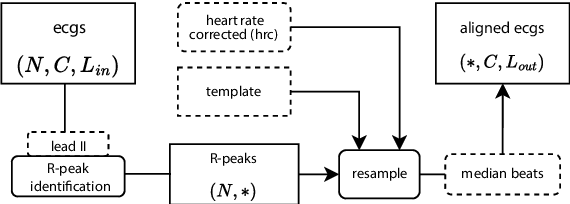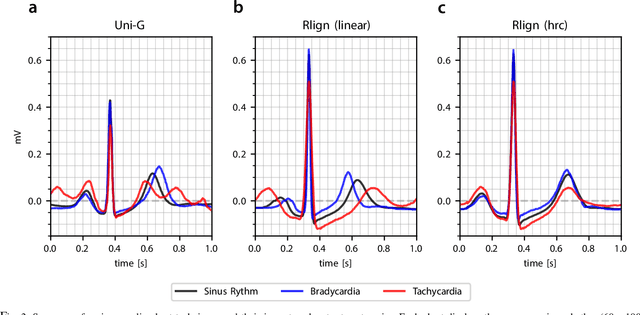The Rlign Algorithm for Enhanced Electrocardiogram Analysis through R-Peak Alignment for Explainable Classification and Clustering
Paper and Code
Jul 22, 2024



Electrocardiogram (ECG) recordings have long been vital in diagnosing different cardiac conditions. Recently, research in the field of automatic ECG processing using machine learning methods has gained importance, mainly by utilizing deep learning methods on raw ECG signals. A major advantage of models like convolutional neural networks (CNNs) is their ability to effectively process biomedical imaging or signal data. However, this strength is tempered by challenges related to their lack of explainability, the need for a large amount of training data, and the complexities involved in adapting them for unsupervised clustering tasks. In addressing these tasks, we aim to reintroduce shallow learning techniques, including support vector machines and principal components analysis, into ECG signal processing by leveraging their semi-structured, cyclic form. To this end, we developed and evaluated a transformation that effectively restructures ECG signals into a fully structured format, facilitating their subsequent analysis using shallow learning algorithms. In this study, we present this adaptive transformative approach that aligns R-peaks across all signals in a dataset and resamples the segments between R-peaks, both with and without heart rate dependencies. We illustrate the substantial benefit of this transformation for traditional analysis techniques in the areas of classification, clustering, and explainability, outperforming commercial software for median beat transformation and CNN approaches. Our approach demonstrates a significant advantage for shallow machine learning methods over CNNs, especially when dealing with limited training data. Additionally, we release a fully tested and publicly accessible code framework, providing a robust alignment pipeline to support future research, available at https://github.com/ imi-ms/rlign.
 Add to Chrome
Add to Chrome Add to Firefox
Add to Firefox Add to Edge
Add to Edge